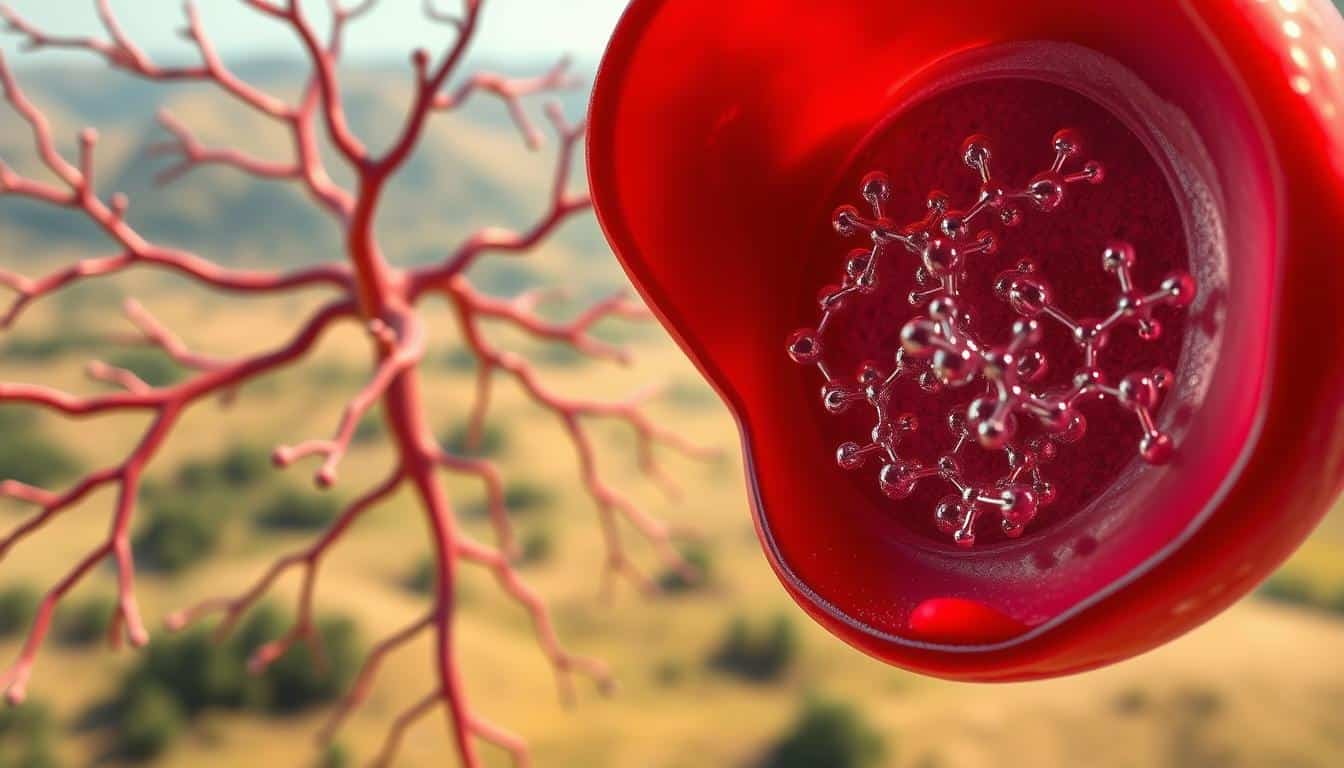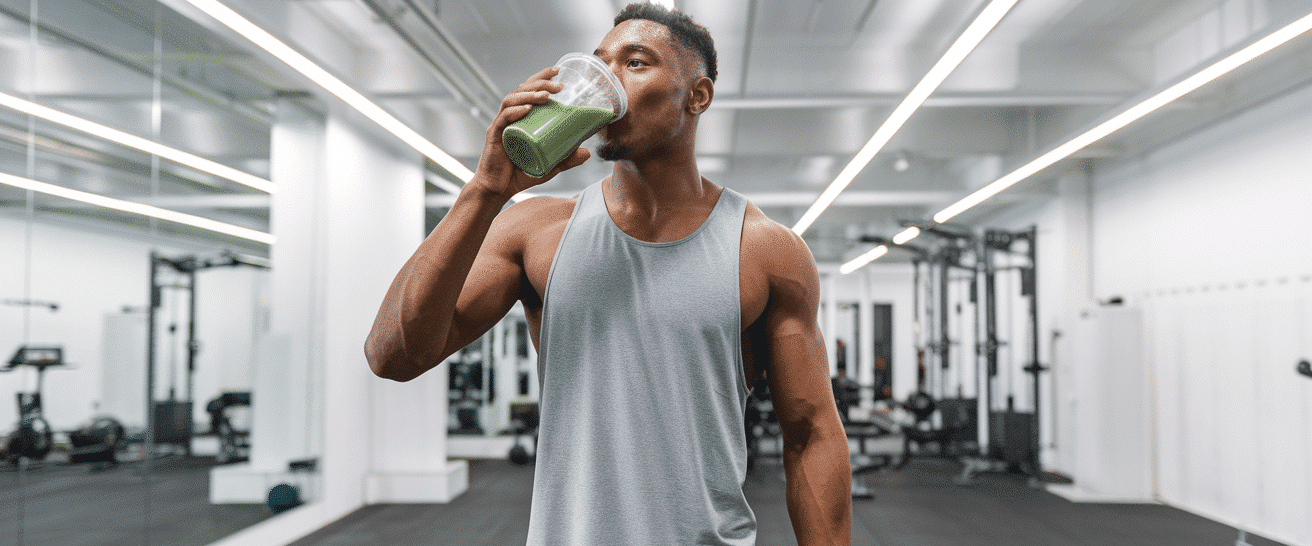Ever feel like your energy tanks mid-workout? You’re not alone. Many athletes struggle with fatigue, and it might be linked to low levels of a key nutrient. Iron plays a critical role in keeping your body fueled and ready to perform. It helps your red blood cells deliver oxygen to your muscles, giving you the stamina you need to push harder and longer.
Without enough iron, your endurance can drop by up to 15%. That’s a big deal if you’re training for a marathon or hitting the gym regularly. Women, in particular, need nearly twice as much iron as men to stay at their best. Ready to learn how to keep your iron levels in check and boost your performance? Let’s dive in!
What Is Iron and Why Is It Important?
Feeling sluggish during training? Iron might be the missing piece. This essential mineral plays a starring role in keeping your energy levels high and your performance sharp. Let’s break it down.
The Biological Role of Iron in the Body
Iron is a key player in your body’s energy production. It’s a core component of hemoglobin, the protein in red blood cells that carries oxygen from your lungs to your muscles. Without enough iron, your body struggles to deliver the oxygen your muscles crave.

Iron’s Function in Oxygen Transport
Think of iron as a delivery service for oxygen. Hemoglobin picks up O₂ from your lungs and drops it off at your working muscles. Another protein, myoglobin, stores oxygen in your muscles, giving you the explosive power needed for activities like weightlifting or sprinting.
When iron levels drop, oxygen delivery can plummet by up to 30%. This leaves your muscles gasping for air, even if you’re breathing just fine. For athletes, this can mean slower recovery, reduced endurance, and a noticeable dip in performance.
| Function | Role of Iron |
|---|---|
| Oxygen Transport | Hemoglobin carries oxygen from lungs to muscles. |
| Muscle Storage | Myoglobin stores oxygen in muscles for quick energy. |
| Energy Production | Iron supports ATP synthesis, fueling your workouts. |
How Iron Supports Athletic Performance
Ever wonder why your muscles feel drained too soon? It could be linked to your iron levels. This mineral is a game-changer for athletes, helping you push harder and recover faster.
Iron’s Role in Endurance and Energy Production
Iron fuels your body’s energy systems. It’s essential for producing ATP, the molecule that powers your training. Low levels can leave you feeling sluggish and unable to keep up.
Myoglobin, a protein in your muscles, relies on iron to store oxygen. This reserve helps you power through high-intensity bursts, like sprints or heavy lifts. Without enough iron, your endurance takes a hit.
Iron and Muscle Function
Iron also supports muscle contractions. It ensures your muscles work efficiently, whether you’re running, jumping, or lifting. Iron deficiency can lead to shaky legs or a weak grip, even if your form is perfect.
For athletes, maintaining iron levels is crucial. It keeps your muscles strong and your performance sharp. Don’t let low iron hold you back from reaching your goals.
The Importance of Iron in Sports Nutrition
Struggling to bounce back after a tough workout? Your iron levels might be the missing link. This essential mineral doesn’t just fuel your training—it’s a game-changer for recovery and performance.
Why Athletes Need More Iron
Athletes have higher demands for iron. Intense training increases red blood cell turnover, and iron loss through sweat and muscle repair can deplete your stores. Without enough, your performance can suffer, and recovery takes longer.
Low serum ferritin levels (below 30μg/L) can delay muscle repair. Optimal levels, however, can cut delayed-onset muscle soreness (DOMS) by up to 40%. That means less downtime and more time crushing your goals.
Iron’s Impact on Recovery and Performance
Iron plays a critical role in rebuilding microtears in muscles overnight. This speeds up recovery, so you’re ready to train again sooner. Low ferritin? Expect to feel sore for days after leg day.
Pro tip: Pair your post-workout smoothies with iron-rich spinach. It’s an easy way to boost your iron status and support faster recovery.
| Function | Impact of Iron |
|---|---|
| Muscle Repair | Rebuilds microtears overnight for faster recovery. |
| DOMS Reduction | Optimal levels cut soreness by up to 40%. |
| Energy Production | Supports ATP synthesis for sustained performance. |
Understanding Iron Deficiency in Athletes
Ever notice your legs feeling like lead during a run? It might not just be a tough workout—it could be a sign of iron deficiency. For athletes, this condition can sneak up and sabotage performance, even if you’re training hard.
What Is Iron Deficiency Anemia?
Iron deficiency anemia happens when your body doesn’t have enough iron to produce hemoglobin. This protein in red blood cells carries oxygen to your muscles. Without it, your energy levels plummet, and your performance takes a hit.
For athletes, this is especially problematic. Intense training increases iron loss through sweat and muscle repair. If you’re not replenishing those stores, you could be setting yourself up for fatigue and poor recovery.
Signs and Symptoms of Iron Deficiency
Iron deficiency doesn’t always shout—it whispers. Here are some sneaky signs to watch for:
- Craving ice or non-food items (yes, it’s a thing!).
- Brittle nails or hair that breaks easily.
- Feeling cold all the time, even in warm weather.
- Persistent fatigue that doesn’t improve with rest.
- Sudden performance plateaus despite consistent training.
Studies show that 60% of deficient athletes report “heavy legs,” while 45% struggle with impaired focus. If these symptoms sound familiar, it’s time to check your iron levels.
| Symptom | What It Means |
|---|---|
| Heavy Legs | Feeling like your legs are weighed down during exercise. |
| Fatigue | Persistent tiredness, even after adequate sleep. |
| Impaired Focus | Difficulty concentrating during workouts or daily tasks. |
Risk Factors for Iron Deficiency in Athletes
Are you struggling to keep up with your training schedule? It might not just be about your effort or routine. Certain factors can increase your risk of iron deficiency, especially if you’re an active individual. Let’s explore what puts athletes at higher risk and how you can stay ahead of it.
Endurance Athletes and Iron Loss
Endurance training can take a toll on your body. Long-distance runners, cyclists, and swimmers often face higher risk of iron deficiency. Why? Intense workouts increase iron loss through sweat and muscle repair. Additionally, the repetitive impact of running can cause hemolysis, where red blood cells break down faster than usual.
If you’re logging miles regularly, monitor your iron levels closely. Symptoms like fatigue, heavy legs, or slower recovery could signal a problem. Don’t wait until it affects your performance—take action early.
The Impact of Menstruation on Iron Levels
For female athletes, menstruation adds another layer of complexity. Heavy periods can drain up to 1.4mg of iron daily, putting women at higher risk of deficiency. Studies show that 35% of female athletes have low iron levels, which can impact energy and recovery.
Here’s how to stay on top of it:
- Track your cycle: On heavy flow days, double down on iron-rich meals like spinach, lentils, or red meat.
- IUD users: Even if your flow is lighter, you might still need supplements. Don’t assume you’re covered.
- Post-workout cravings? Reach for dark chocolate—it packs 3.4mg of iron per ounce and satisfies your sweet tooth.
| Risk Factor | Actionable Tip |
|---|---|
| Endurance Training | Monitor iron levels regularly and adjust your diet or supplements as needed. |
| Heavy Menstruation | Increase iron intake during heavy flow days and consider supplements if necessary. |
| Repetitive Impact | Incorporate recovery strategies like foam rolling and adequate rest to reduce hemolysis. |
How Exercise Affects Iron Levels
Feeling like your workouts are draining you more than usual? It might not just be the intensity of your routine. Exercise can significantly impact your iron levels, and understanding how can help you stay on top of your game.
Iron Loss Through Sweat and Hemolysis
When you train, your body loses iron in two main ways: through sweat and hemolysis. Sweat might seem harmless, but it can deplete your iron stores over time. Hemolysis, the breakdown of red blood cells, is another culprit, especially for endurance athletes.
Repetitive activities like running or cycling can increase hemolysis, reducing your body’s ability to transport oxygen efficiently. This can leave you feeling fatigued and struggling to recover after workouts.
The Role of Hepcidin in Iron Regulation
Hepcidin, a hormone produced by your liver, plays a key role in regulating iron absorption. When you exercise, your body releases IL-6, which spikes hepcidin levels for 3-6 hours. This spike can block up to 50% of iron absorption, making it harder for your body to replenish its stores.
Here’s the good news: timing matters. Training early in the morning, like at 6 AM, can improve iron absorption compared to afternoon sessions. Pairing your post-workout meal with heme iron sources, like red meat, can also bypass hepcidin’s block.
| Factor | Impact on Iron Levels |
|---|---|
| Sweat | Leads to gradual iron loss during intense training. |
| Hemolysis | Breaks down red blood cells, reducing oxygen transport. |
| Hepcidin Spike | Blocks iron absorption for 3-6 hours post-exercise. |
Overtraining can lead to chronically high hepcidin levels, so listen to your body’s fatigue cues. Balance your training with adequate rest and iron-rich meals to keep your levels optimal.
Iron Absorption and Metabolism
Wondering why your energy dips even after a balanced meal? It could come down to how your body absorbs iron. This process is key to keeping your energy levels steady and your performance sharp.
How the Body Absorbs Iron
Your body absorbs iron in two forms: heme and non-heme. Heme iron, found in animal products like red meat, is absorbed more efficiently. Non-heme iron, from plant sources like spinach, requires a little extra help to be absorbed fully.
For athletes, understanding this difference is crucial. Pairing non-heme iron with vitamin C-rich foods, like oranges or bell peppers, can boost absorption by up to 300%. This simple swap can make a big difference in your energy levels.
Factors That Enhance or Inhibit Iron Absorption
Certain foods and habits can either help or hinder your body’s ability to absorb iron. Here’s what you need to know:
- Coffee with meals can cut iron absorption by 40%. If you’re a latte lover, wait at least an hour after breakfast to enjoy your cup.
- Spinach’s oxalates can lock up iron. Blanching it first can make this leafy green more effective.
- Fructose in mangoes can boost non-heme iron uptake. Add a few slices to your smoothie for a tasty, iron-friendly treat.
Calcium supplements can also block up to 50% of iron absorption. If you’re taking them, space them out from iron-rich meals to avoid interference.
Dietary Sources of Iron for Athletes
Need a boost to power through your training sessions? The right food can make all the difference. For athletes, iron is a key nutrient that fuels performance and recovery. Let’s explore the best sources to keep your energy levels high.
Heme vs. Non-Heme Iron
Iron comes in two forms: heme and non-heme. Heme iron, found in animal products like red meat and clams, is absorbed more efficiently. Non-heme iron, from plant sources like spinach and lentils, requires a little extra help for absorption.
Pairing non-heme iron with vitamin C-rich foods, like oranges or bell peppers, can boost uptake by up to 300%. This simple trick ensures you’re getting the most out of your meals.
Iron-Rich Foods for Optimal Performance
Here are some top picks to keep your iron levels in check:
- Clams: Packing 24mg per serving, they’re a powerhouse for iron.
- Fortified cereal: A quick breakfast option with 12mg per bowl.
- Dark chocolate: A tasty treat with 3.4mg per ounce.
For a post-workout recovery boost, try turkey drumsticks. They’re rich in iron and help rebuild your stores after intense training.
Iron Supplementation for Athletes
Noticing a dip in your performance despite consistent training? It might be time to consider iron supplements. While a balanced diet is key, sometimes your body needs an extra boost to keep up with intense workouts.
When Is Supplementation Necessary?
If you’re an athlete, your iron needs are higher than average. Endurance training, heavy sweating, and muscle repair can deplete your stores. Signs like fatigue, heavy legs, or slow recovery might indicate it’s time to supplement.
Blood tests can confirm low ferritin levels. If your levels are below 30μg/L, supplementation can help. Don’t wait until you’re feeling drained—proactive care keeps you at your best.
Types of Iron Supplements and Their Effectiveness
Not all supplements are created equal. Ferrous sulfate, with 20% elemental iron, is a top choice. Pair it with orange juice (not milk) to enhance iron absorption.
Here are some options to consider:
- Pills upset your stomach? Try iron patches or heme polypeptide supplements for gentler absorption.
- Severe deficiency? IV iron can boost ferritin levels three times faster, but it’s reserved for extreme cases.
- Timing matters: Take your supplement at bedtime to reduce nausea and improve absorption.
Remember, consistency is key. Stick to your regimen, and you’ll notice a difference in your energy and performance.
Monitoring Iron Status in Athletes
Feeling off your game lately? It might be your iron status. For athletes, keeping an eye on your iron levels is just as important as your training plan. Without proper monitoring, you could miss early signs of deficiency, leaving you fatigued and underperforming.
Key Blood Markers to Track
Your blood tells the story of your iron status. Here are the key markers to watch:
- Ferritin: This protein stores iron. Levels below 30μg/L signal deficiency.
- Hemoglobin: Low levels mean your blood can’t carry enough oxygen.
- Transferrin saturation: This shows how much iron is available for use.
Regular blood tests can catch issues early, so you can adjust your diet or supplements before it affects your performance.
How Often Should Athletes Test Their Iron Levels?
Testing frequency depends on your training intensity and lifestyle. Here’s a quick guide:
| Athlete Type | Testing Frequency |
|---|---|
| Endurance Athletes | Every 3 months |
| Casual Gym-Goers | Biannually |
| Female Athletes | Sync with menstrual cycle (mid-follicular phase) |
Starting a new training block? Get tested—your iron needs spike with increased volume. Racing season? Check your levels 8 weeks pre-event to allow time for adjustments.
The Role of Vitamin C in Iron Absorption
Want to get more out of your meals? Pair them with vitamin C! This powerhouse nutrient doesn’t just boost your immune system—it’s a game-changer for iron absorption. For athletes, this means better energy, faster recovery, and improved performance.
How Vitamin C Enhances Iron Uptake
Iron comes in two forms: heme and non-heme. While heme iron, found in animal products, is easily absorbed, non-heme iron from plant sources needs a little help. That’s where vitamin C steps in. It converts non-heme iron into a more absorbable form, increasing uptake by up to 300%.
Here’s a pro tip: Add a squeeze of lemon to your spinach salad or toss bell peppers into your lentil soup. These small tweaks can make a big difference in how your body uses iron.
Foods Rich in Vitamin C for Athletes
Need a quick way to boost your vitamin C intake? Here are some top picks:
- Bell peppers: Packing 95mg per cup, they’re a crunchy, versatile snack.
- Kiwi: With 64mg per fruit, it’s a sweet post-workout treat.
- Papaya: One cup delivers 88mg, perfect for smoothies or breakfast bowls.
For a concentrated boost, try freeze-dried acerola powder. Just one teaspoon provides 500% of your daily vitamin C needs. Add it to your post-workout shake for a recovery-friendly punch.
Iron and Altitude Training
Training at high altitudes? Your iron levels might need a boost. When you’re pushing your limits in thin air, iron plays a starring role in keeping your energy steady and your performance sharp. Without enough, you could feel sluggish and struggle to recover.
Why Iron Is Crucial for High-Altitude Performance
At higher elevations, oxygen levels drop, and your body works harder to deliver it to your muscles. Iron is essential for producing hemoglobin, the protein in red blood cells that carries oxygen. Low levels can leave you gasping for air, even if you’re breathing fine.
Studies show that 100mg of iron daily during altitude camps can boost hemoglobin levels by 3-5%. This small increase can make a big difference in your endurance and recovery. For athletes, optimizing iron status is a game-changer for high-altitude success.
Iron Supplementation During Altitude Training
If you’re heading to the mountains, start iron supplements two weeks before your camp. This gives your body time to build up its stores and maximize the benefits. Oral supplements work well if you’re consistent, but IV options are available for last-minute fixes.
Here’s what to keep in mind:
- Timing matters: Take your supplement at bedtime to reduce nausea and improve absorption.
- Don’t overdo it: Too much iron can lead to oxidative stress, so stick to recommended doses.
- Monitor your levels: Regular blood tests can help you stay on track and avoid deficiencies.
For more tips on optimizing your nutrition for peak performance, check out this ultimate guide.
The Connection Between Iron and Immune Function
Feeling under the weather more often than usual? Your iron levels might be to blame. This essential mineral doesn’t just fuel your workouts—it’s a key player in keeping your immune system strong and ready to fight off infections.
How Iron Supports the Immune System
Iron is vital for producing white blood cells, your body’s first line of defense against germs. It also helps these cells function effectively, ensuring they can identify and destroy harmful invaders. Without enough iron, your immune system can’t operate at full strength.
Low ferritin levels (below 30μg/L) can double your risk of upper respiratory infections. That means more sore throats, colds, and missed training days. If you’re always battling gym germs, it’s time to check your iron status.
Iron Deficiency and Increased Infection Risk
Overtraining and low iron are a recipe for guaranteed sick days. When your body’s iron stores are depleted, your immune system struggles to keep up. This leaves you more vulnerable to infections, especially during intense training blocks.
Here’s how to stay ahead of it:
- Always sore throat? Check ferritin levels before blaming gym germs.
- Overtraining + low iron = A weakened immune system and more sick days.
- Fix: Pair chicken soup (heme iron) with oranges (vitamin C) for immune armor.
By keeping your iron levels in check, you’ll not only boost your performance but also protect your health year-round. Don’t let deficiency hold you back—stay strong, stay healthy, and keep training!
Iron’s Impact on Cognitive Function and Mood
Struggling to stay focused during your workouts? It might not just be a lack of motivation—your iron levels could be to blame. Iron plays a crucial role in brain health, affecting everything from focus to mood. Let’s explore how this essential mineral keeps your mind sharp and your energy steady.
Iron and Brain Health
Iron is essential for producing neurotransmitters like dopamine and serotonin, which regulate mood and focus. Without enough iron, your brain struggles to function optimally. This can lead to mental fatigue, making it harder to concentrate during workouts or competitions.
Studies show that 40% of athletes with iron deficiency report “mental fatigue” during competitions. This isn’t just about physical stamina—it’s about staying sharp when it matters most. If you’re struggling to nail race strategies, it’s time to check your iron levels before blaming your training plan.
How Iron Deficiency Affects Focus and Motivation
Iron deficiency doesn’t just drain your energy—it clouds your mind. Low levels can lead to brain fog, making it harder to stay motivated and focused. Pre-race jitters might feel normal, but if they’re paired with fatigue, it could be a sign of low iron.
Here’s how to tell the difference:
- Can’t nail race strategies? Check iron before firing your coach.
- Pre-race jitters vs iron fatigue: Know the difference.
- Fix: Spinach omelets (iron + choline) sharpen focus better than caffeine.
| Effect | Impact on Cognitive Function |
|---|---|
| Mental Fatigue | Difficulty concentrating during workouts or competitions. |
| Brain Fog | Reduced clarity and focus, affecting motivation. |
| Mood Swings | Low iron disrupts neurotransmitter production, leading to irritability. |
By keeping your iron levels in check, you’ll not only boost your physical performance but also stay mentally sharp. Don’t let symptoms of fatigue hold you back—fuel your brain and body for success.
Strategies to Optimize Iron Levels for Athletes
Feeling like your performance is plateauing despite your best efforts? It might be time to fine-tune your iron strategy. For athletes, maintaining optimal levels is key to staying sharp and strong. Let’s dive into practical ways to balance your diet and supplementation while tailoring your intake to your training demands.
Balancing Diet and Supplementation
Your diet is the foundation of your iron status. Focus on iron-rich foods like lean meats, beans, and fortified cereals. Pair non-heme iron sources with vitamin C-rich foods to boost absorption. Think spinach salads with bell peppers or lentil soups with a squeeze of lemon.
Sometimes, food alone isn’t enough. If you’re in a heavy training block or preparing for altitude camps, consider supplements. Ferrous sulfate is a reliable option, but timing matters. Take it at bedtime to reduce nausea and improve absorption.
Tailoring Iron Intake to Training Demands
Your iron needs fluctuate with your training intensity. During taper time, maintain your intake—your body needs it most for recovery. Off-season lifters, take note: More muscle means higher myoglobin levels, which increases your iron needs.
Race season? Time your iron-rich meals wisely. Aim for 4 hours pre-event to avoid gut issues while ensuring your energy levels are steady. Here’s a quick guide:
- Taper time: Keep your iron steady—recovery depends on it.
- Off-season: Build muscle? Boost your iron to match.
- Race day: Plan meals early to avoid discomfort.
By adjusting your iron strategy to your training demands, you’ll stay fueled, focused, and ready to perform at your best.
Conclusion
Ready to take your training to the next level? Iron isn’t just a mineral—it’s your secret weapon for PRs and podium finishes. For athletes, maintaining optimal levels is non-negotiable if you want to perform at your best.
Get tested regularly, eat smart, and supplement wisely. Your energy levels will thank you. Pair iron-rich foods with vitamin C for better absorption, and consider supplements during intense training blocks.
Remember, peak performance starts with optimal iron. Don’t skip this step—your body and your goals deserve the best fuel. Stay strong, stay sharp, and keep pushing forward!


